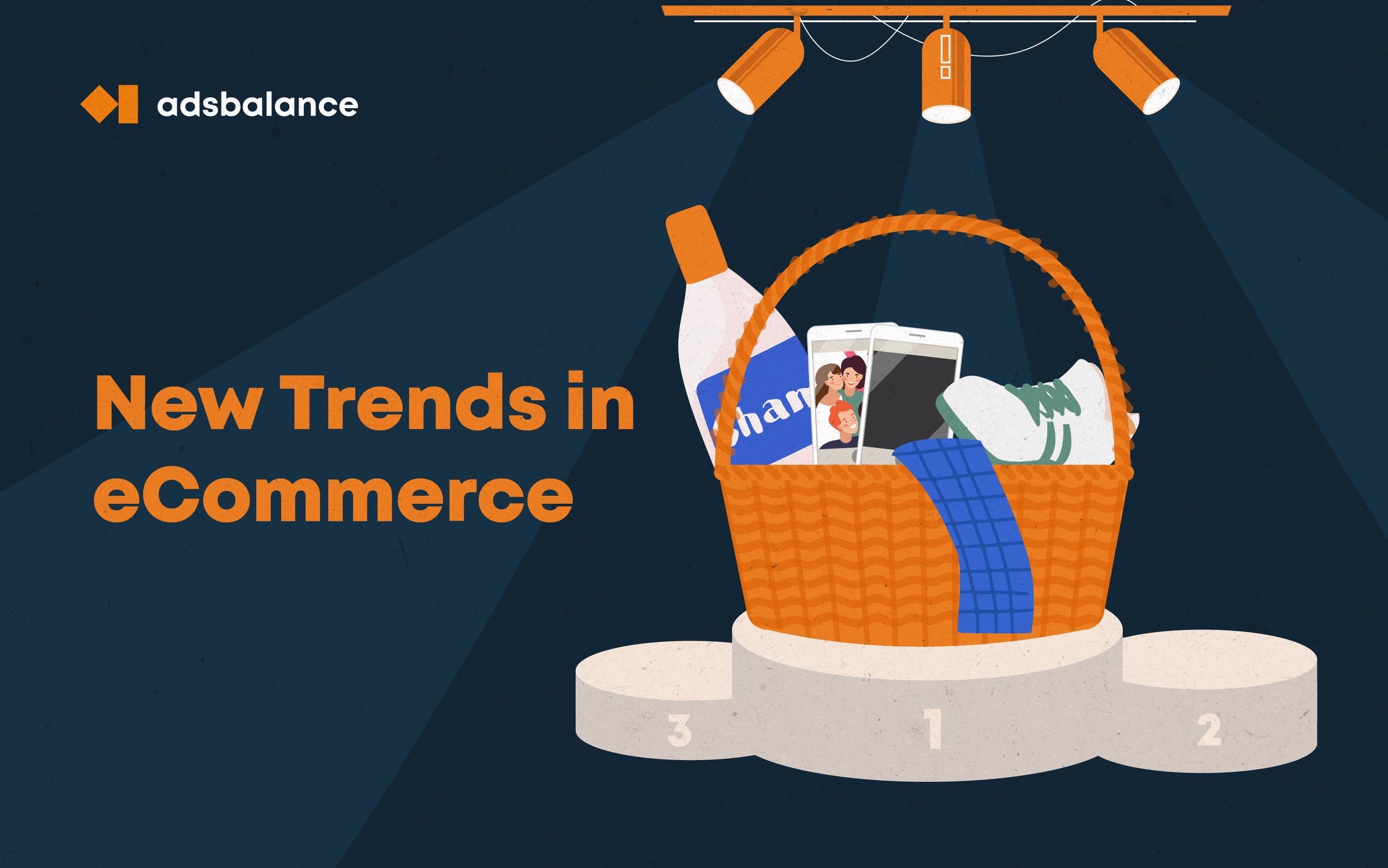
Merry Friday! We are more than happy to plead that the prosperity of the majority of the people on Earth tends to grow. Each of us can afford to buy/eat/travel much more than even 20 years ago. Of course, this sometimes leads to overproduction and overconsumption, but we are not going to cover ecology and ethical issues in this article. What we are going to speak about today is the eCommerce and its technologies that are getting more and more sophisticated — more and more companies compete for the increasing number of customers.
7 Trends in eCommerce
From a common person’s point of view, the technology and services are almost perfect-we can take out a mortgage for a house by the sea or buy a high-bred mini-pig lying on a sofa under a shepherd’s plaid. Can brands and digital biggies make the process even more seamless and smooth, and are they really going to do so? Let’s take a look at the existing shopping bottlenecks (or opportunities for growth) and how they might be worked on.
1) Emotional/intuitive/eye shopping, or I want this chair and that girl’s dress right now!
Even if you stumble upon a picture of your dream turquoise chair on the Internet, and it’s — alas! — not on Instagram with its shopping tags, chances are that when you search for the image with image search all that Google can say is “oh, this is a blue Scandinavian-style chair”, like if you didn’t know that for yourself. What do they have in store for this case? AI/AR apps can help!
Many companies hire AI outsource companies to add the clothes/goods recognition functionality to their existing platforms, but for now we know of Yandex (aka Russian Google) new product — Sloy, a hypebeast social network app aimed at short fashion/style videos. We haven’t tried it to find any rare sneakers, but look at their design!
2) Everything is in the right place. We’re talking about marketplaces .
Why shop for food, housing goods, clothes, books, and cosmetics on a special site if you can do this on a single platform? Of course, niche products are there for you if you need something exquisite of exclusive,but greatest marketplaces want a bigger piece of cake each month and are already capable of satisfying all of a regular customer’s needs. Not only they provide you with stuff available at an average shopping mall, but they also seek contracts with the mentioned niche brands, be it organic raw snacks, designer pet furniture or handmade brass jewelry.
3) Social eCommerce and the growth of Influencer marketing — once more about intuitive shopping. This is very true about the Chinese market (we believe most of their trends are the near future of worldwide eCommerce). AliBaba and JD.com (Alibaba, Tmall, TaoBao) have some sorts of social networks integrated into their marketplaces.
- There are bloggers who only do review goods (no other content), and they thrive. Any shop can add a blogger’s video review to the good’s info page seamlessly on the platform. Do we need to specify how this influences sales?
- You can order an item right away during watching the stream, and streams do have comments, so the engagement rate is ultra-high compared to the classic item page.
- They use short videos to sell the whole images (again this instinctive decision making!) — instead of static pictures.
- TikTok also has a built-in marketplace. Did you know? We’re dying to see it the other countries: just imagine the boost to your regular TikTok (and overall) ads’ efficiency
- Fun fact — China also has a more “smalltown”, less hype or highbrow if this can be said about that kind of app, more competitor to TikTok video social network — Kwai (Kuaishou). Kwai also has streaming opportunities and an integrated marketplace. For instance, they might show you a footage from the farm and then sell you wholesale vegetables. Is this utopic or dystopic?

In general, influencer/social platforms ads in China are relatively expensive and the bloggers’ rates are close to North American ones. Due to strict governmental policies for web contents, social media is the only oasis of relative freedom of consumers’ and brands’ speech. Chinese still trust their bloggers, so the brands don’t suffer that much! Also, if you want to try out this service, we can help with it. For more information proceed to our Influencer Service page.
5) QR code shopping — tiny but trendy. Walk in, scan, walk out. Amazon, Tesco, and Walnut (many more, in fact) are already using it. Zara introduced a QR code collection point: order online, come scan the code and walk away. In addition, you can get all information about the product you like in your smartphone- no need to call the assistant and ask him if you need to buy those shoes right now or there’s still 10 of them in another store or stand there guessing if this brand is really eco-friendly or just pretending.
6) AI and AR are more involved than ever (not surprisingly, and there’s no reason for this tendency to change unless there is a tech apocalypse), and in many different ways, including:
- shopper’s experience customization: AI collects data from available sources, there is the software to track your offline shopping movements and connect them to your online shopping data and social network actions. This means you get more personalized offers, more engaging landing pages and the demand created and predicted by anyone else but you.
- AR shopping. The easiest example is furniture -why mess with 3d modeling software if you can put on glasses and the seller does the rest (eg., fit a new couch into your existing living room)
- chatbots. Whether they needed to take the load of call centers or make it more fun, chatbots provide you with a fast and efficient way to interact with a shop. The better computer support you get, the more loyal you are, aren’t you?
7) Customers ready to share their own data. When was the last time you tried to pick a piece of clothes with unknown fit and tried to get the manufacturer’s sizing chart from the retailer? Did you notice they’d rather ask you about your belly type, preferred fit and your most favorite shopping brands sizes of choice? The author of this failed to get a manufacturer’s chart once, being forced to pass the (doubtedly) AI fitting procedure, but usually this is just a nice addition.
Do you know or expect any other trends to appear in the near future? We’re looking forward to your comments!





Comments are closed.